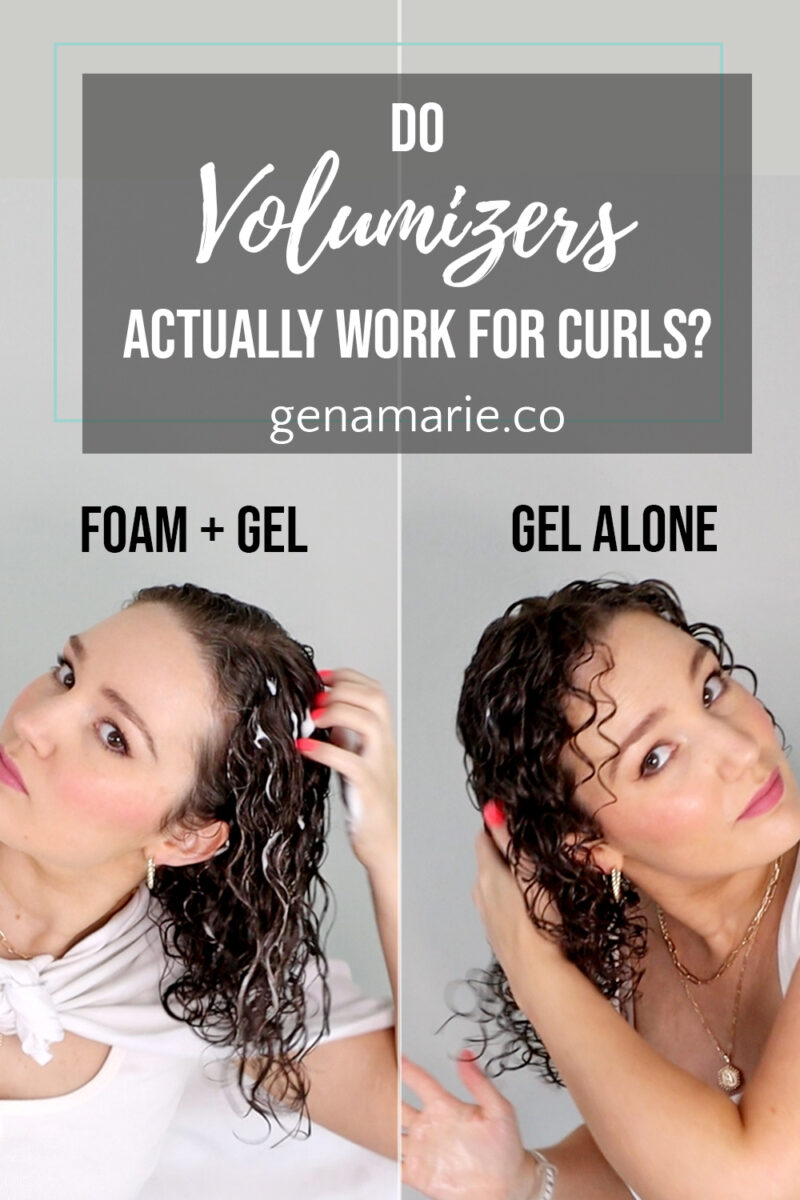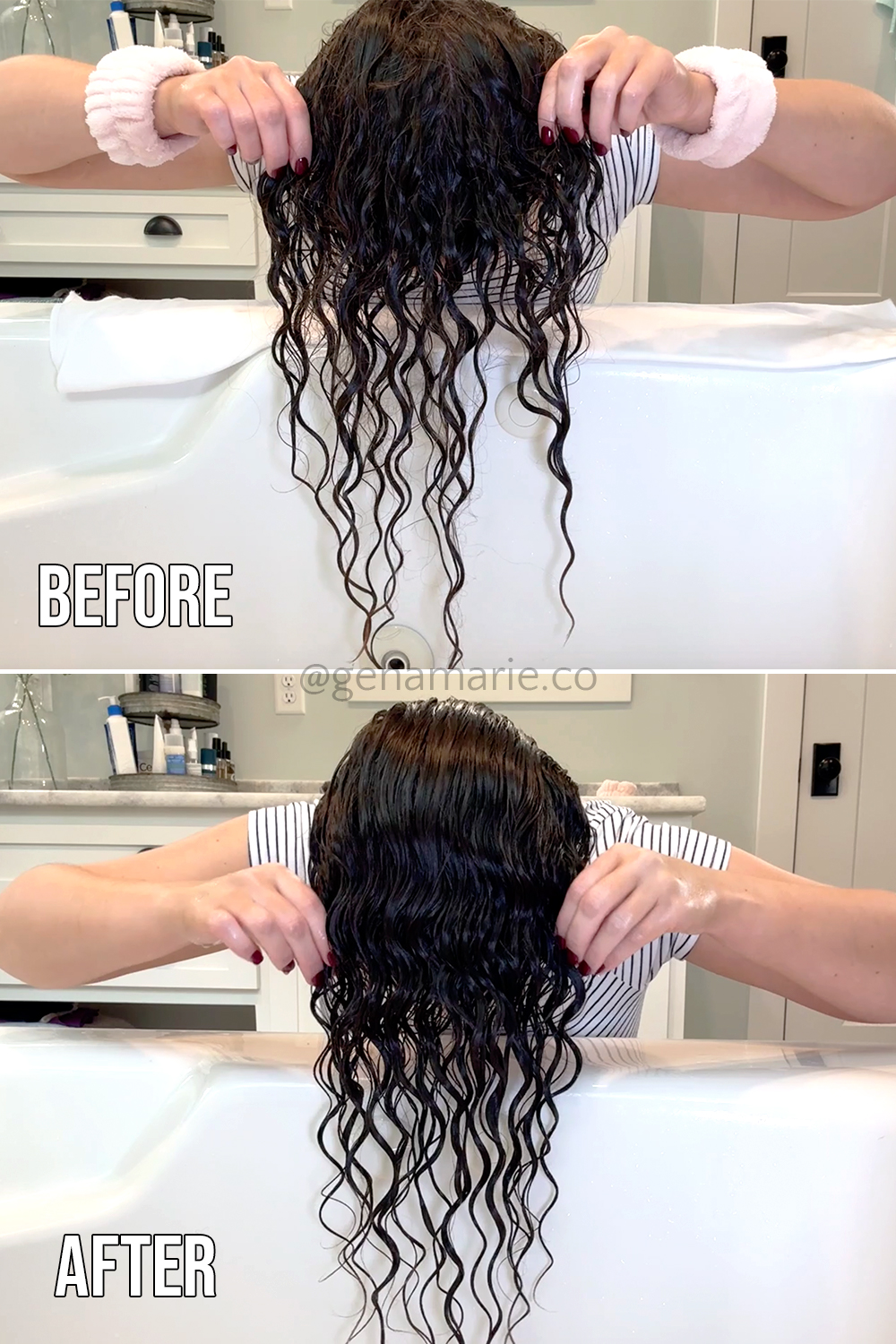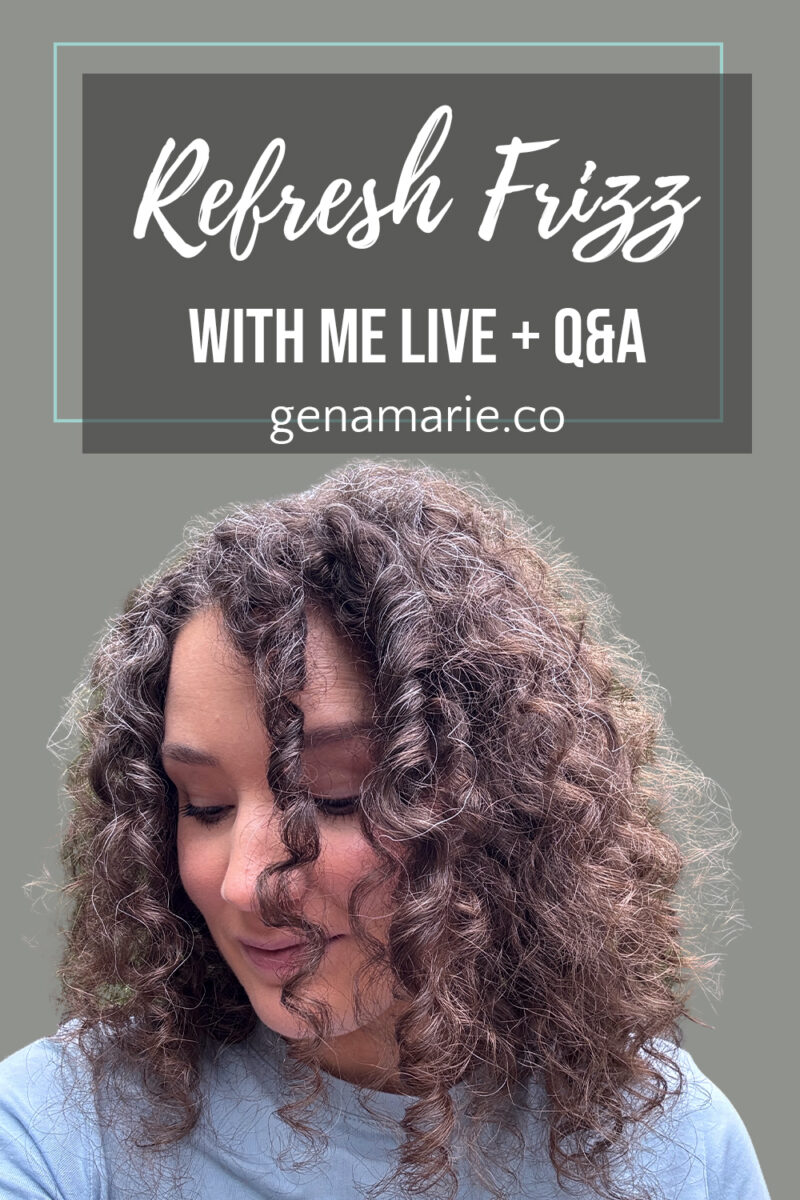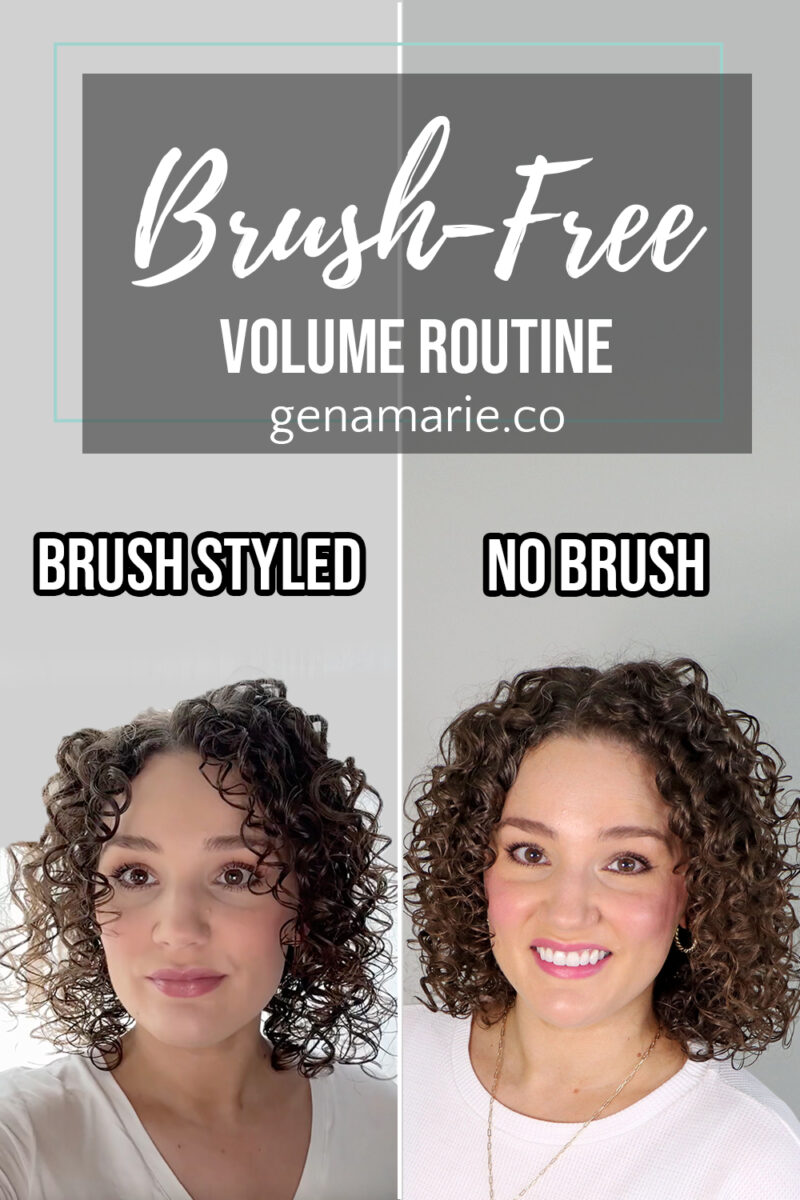
Do Volumizing Products Actually Work?
Volumizing products promise fuller-looking curls and lifted roots, but do they actually work for curly hair, or are they just sticky, overhyped, and a total

Are your curls dry, frizzy, and brittle feeling even after you just washed your hair? It’s likely time to deep condition, or it may be that you’re deep conditioning improperly.
Whether you’re new to starting your curly hair journey or just want a refresher, I’m walking you through how to deep condition for beginners.
This is part of a new series of beginner-friendly posts covering the basics of curly haircare, so check out the last one on How to Properly Wash Curly Hair.
Purpose: Remove product buildup, sweat, oil, and impurities
Who it’s best for: All hair types
Frequency: 1-4 times per month
Product: Shampoo labeled as clarifying, detox, exfoliating, etc.
Shampoo with your favorite shampoo or clarifying shampoo.
I used the Mielle Organics Exfoliating Shampoo which is a clarifying shampoo that removes buildup from products, sweat, and oil. It has strong surfactants but is also formulated not to strip moisture from your hair.
Typically on deep conditioning days, I’m also using a clarifying shampoo because I like to do both for a reset and a clean slate to ensure my deep conditioner is going to penetrate. If you’ve ever applied a conditioner or deep conditioner and rinsed it out and your hair still looked frizz and dry, it could be because you have buildup in the way.
Some people also have hard water which results in mineral buildup that will really cause that gross feeling. Hard water buildup requires a special shampoo to remove it.
After rinsing out the shampoo, it’s time to deep condition.
Purpose: Restore moisture/condition, penetrate the hair, soften, smooth the cuticle, add shine, strengthen (if contains protein)
Who it’s best for: All hair types
Frequency: 1-4 times per month
Product: Deep conditioner or mask
I used the Mielle Rice Water with Aloe Deep Conditioner. This contains aloe which is a humectant that helps draw in moisture and coat the strands, and rice bran extract which is conditioning.
Focus the product on the ends, and then work the rest up towards the roots. Glaze some over the surface of the roots because we still need to condition the hair there but we want to avoid it getting onto the scalp if possible.
I prefer to detangle before getting in the shower with some oil, but if you need to detangle now is the time to do it. Once it’s detangled, brush through your hair to ensure the deep conditioner is fully coated on every strand. This will prevent random patches of frizz and dryness, especially if you have thick hair you’ll want to be thorough.
Scrunch and pulse a bit to increase the absorption. This will also scrunch out excess water so it’s not dripping all over.
Clip it up, put a shower cap over it, and let it sit for about 15-20 minutes.
I always recommend reading the label on your deep conditioner because the time that you are supposed to let it sit will vary. Some will say just 5 minutes, and some may say up to 20. I would say you don’t want to leave it on more than 30 minutes
To increase absorption, you can add heat. This can be done by putting on a plastic shower cap and hovering your diffuser around your head at a distance, or by using a microwavable cap such as the Hot Head.
One major mistake a lot of people make is leaving their deep conditioner on all day or overnight. Wearing it all day is pointless because once your hair dries, it’s no longer working. Plus your hair can become over moisturized which leads to limp curls.
Leaving it on overnight, especially if you have it wrapped in a towel or something is not good for your scalp. The damp hair pressed against your scalp all night is a recipe for fungal growth and scalp issues.
After 15 minutes, rinse it out. Gently massage the scalp just to make sure it’s fully rinsed off and there isn’t any left behind on your scalp that could weigh your hair down.
Another common mistake is leaving your deep conditioner in and not fully rinsing it out. This should only be done if the product’s label specifically states that you can use it as leave-in. You don’t want to get over-moisturized curls because then they’ll be flat and not curl up.
If you have very fine hair that gets weighed down by deep conditioner, you can try reversing the order of these steps and deep condition before shampooing, then just add in a lightweight conditioner after you shampoo.

Apply styling products and use styling techniques to define curls.
Purpose: Moisturize, define curls, tame frizz, hold curls
Who it’s best for: All hair types
Frequency: Every wash day
Product: Leave-in, curl cream, gel, or mousse
After rinsing out my deep conditioner, your curls should have the perfect base for styling. I usually go with a curl cream for moisture and a gel for hold. I’m currently experimenting with this new Innersense product, I Create Memory, which is a strong hold gel. I first applied the Quite Calm Curl Control Cream then the I Create Memory gel. Let me know if you want a full review on this product.
I did a bit of brush styling, then diffused.
How frequently you deep condition is going to depend on your hair type and climate. Those with very healthy fine-textured hair may not need much moisture and can deep condition just once a month or as needed.
On the other hand, those with high porosity hair of any texture should deep condition more frequently to maintain moisture and strengthen the hair. If you’re transitioning from heat damage, I would recommend once per week and be consistent with it.
The courser textured your hair is, you will likely need to deep condition more frequently as well.
In general, you won’t want to deep conditioner more than once per week.
Some deep conditioners simply provide moisture and condition the hair, and others have added ingredients that can help strengthen the hair such as protein.
A deep conditioner with protein is also moisturizing. This is great for those with damaged hair or very fine-textured hair. Proteins help the hair retain moisture and provide structure and strength. However, someone with hair that does not need strengthening can experience a stiff, brittle feeling if they use too much protein because it will accumulate on the hair.
I recommend having 2 deep conditioners on hand, one that is protein-free and one that contains protein. Rotate them each time you deep condition, and depending on your damage level you can use the protein one more or less frequently.
Another type of strengthening deep conditioner is one with bond-building ingredients. Sometimes these don’t contain protein and just contain bond-building ingredients and moisture, making them more tolerable for all hair types, even those who may not tolerate much protein.
To help simplify this, I’ve created a free downloadable chart that combines hair texture and porosity to suggest how often you should use each type of mask.
I also have the free Wash Day Schedule that shows how to rotate your routines visually.
I’m including some of my favorite deep conditioners with and without protein, but I will include more suggestions on the blog post that goes with this video linked below.
There are some symptoms you may be experiencing if you’re using the wrong deep conditioner for your hair type. Those include:
Check out the Shop page here on my blog to filter and sort all my product recommendations to find the perfect match for you.


Volumizing products promise fuller-looking curls and lifted roots, but do they actually work for curly hair, or are they just sticky, overhyped, and a total

Disclaimer: This post is sponsored by Curlsmith. Products are gifted. Full disclosure here. If your hair turns into a frizzy puffball the moment you step

Today I refreshed my hair in real-time while sharing some of my best tips for refreshing frizz from lack of hold or humidity. I’m also

Do you use a brush when styling AND struggle to get enough volume? If so, you could be brush styling away your volume! Today I’m
© 2025 Gena Marie